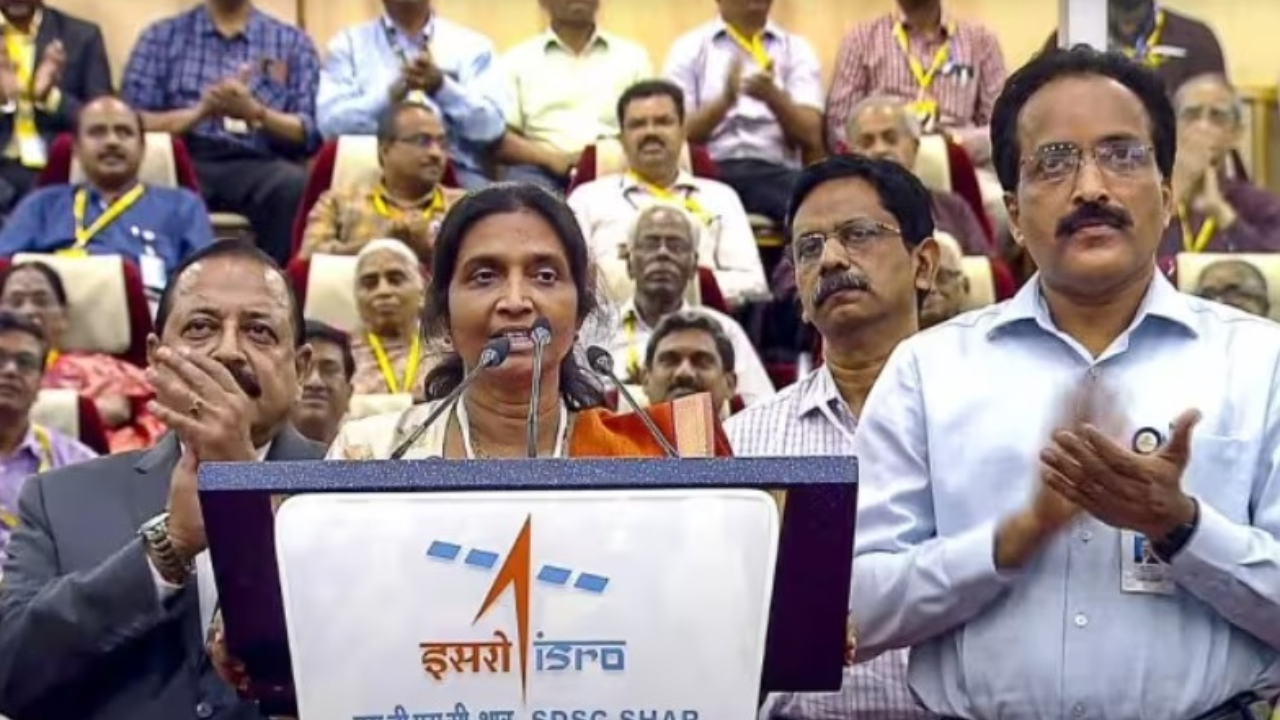[ad_1]
NEW DELHI: Leading the complex scientific mission of putting India’s first solar observatory Aditya-L1 at Langrang point L1 from where the spacecraft will do the ‘celestial surya namaskar’ of the Sun is Isro’s project director Nigar Shaji, a gentle and smiling soul, who had worked tirelessly on the mission with her team for eight years to make it a success.
Shaji, who joined the elite space agency in 1987, rose through the ranks to become the project director of India’s first solar mission. The 59-year-old, who was earlier the associate project director of Resourcesat-2A, which is still operational, is also the programme director for all lower orbit and planetary missions. She started her stint in Isro by working at the Sriharikota spaceport off the Andhra coast and was later shifted to the U R Rao Satellite Centre in Bengaluru, which is the key centre for developing satellites.
Born to a Muslim Tamil family in Sengottai in Tamil Nadu’s Tenkasi district, Shaji did her schooling in Sengottai before getting admitted to the Government College of Engineering, Tirunelveli, under Madurai Kamaraj University, where she earned an engineering degree in electronics and communications. Later, she did her masters in electronics from Birla Institute of Technology, Mesra.
Shaji’s father Sheikh Meeran, a mathematics graduate who turned to farming by choice, always inspired her to do something big in life. “Both my parents were very supportive throughout my childhood. Because of their continued support, I rose to such heights,” she said in a media interview recently.
Clearing any misconception about gender discrimination in the space agency, Shaji said she never faced any gender bias in Isro. It was due to the continued support of her seniors, she has been able to reach this position today. “Being the team leader, many people now work under me. So, I groom the same way my seniors groomed me,” Shaji said.
Shaji and her team started working on the Aditya L1 project in 2016. Though the Covid pandemic stalled their work around 2020 when Isro activities came to a near halt, the project work never stopped. She and her team continued to work on the solar observatory containing seven scientific instruments, which was launched on September 2 last year. Shaji and her team kept a hawk’s eye on the spacecraft throughout its journey towards the L1 point from the Earth after several manoeuvres. Due to their hard work, Aditya-L1 has finally reached its destination, the halo orbit, from where the spacecraft will observe the Sun without any hindrance or occulations.
The 59-year-old, who is playing a key role in several Isro missions, has now become a role model for many women who want to pursue a career in space science.
Shaji, who joined the elite space agency in 1987, rose through the ranks to become the project director of India’s first solar mission. The 59-year-old, who was earlier the associate project director of Resourcesat-2A, which is still operational, is also the programme director for all lower orbit and planetary missions. She started her stint in Isro by working at the Sriharikota spaceport off the Andhra coast and was later shifted to the U R Rao Satellite Centre in Bengaluru, which is the key centre for developing satellites.
Born to a Muslim Tamil family in Sengottai in Tamil Nadu’s Tenkasi district, Shaji did her schooling in Sengottai before getting admitted to the Government College of Engineering, Tirunelveli, under Madurai Kamaraj University, where she earned an engineering degree in electronics and communications. Later, she did her masters in electronics from Birla Institute of Technology, Mesra.
Shaji’s father Sheikh Meeran, a mathematics graduate who turned to farming by choice, always inspired her to do something big in life. “Both my parents were very supportive throughout my childhood. Because of their continued support, I rose to such heights,” she said in a media interview recently.
Clearing any misconception about gender discrimination in the space agency, Shaji said she never faced any gender bias in Isro. It was due to the continued support of her seniors, she has been able to reach this position today. “Being the team leader, many people now work under me. So, I groom the same way my seniors groomed me,” Shaji said.
Shaji and her team started working on the Aditya L1 project in 2016. Though the Covid pandemic stalled their work around 2020 when Isro activities came to a near halt, the project work never stopped. She and her team continued to work on the solar observatory containing seven scientific instruments, which was launched on September 2 last year. Shaji and her team kept a hawk’s eye on the spacecraft throughout its journey towards the L1 point from the Earth after several manoeuvres. Due to their hard work, Aditya-L1 has finally reached its destination, the halo orbit, from where the spacecraft will observe the Sun without any hindrance or occulations.
The 59-year-old, who is playing a key role in several Isro missions, has now become a role model for many women who want to pursue a career in space science.
[ad_2]
Source link


